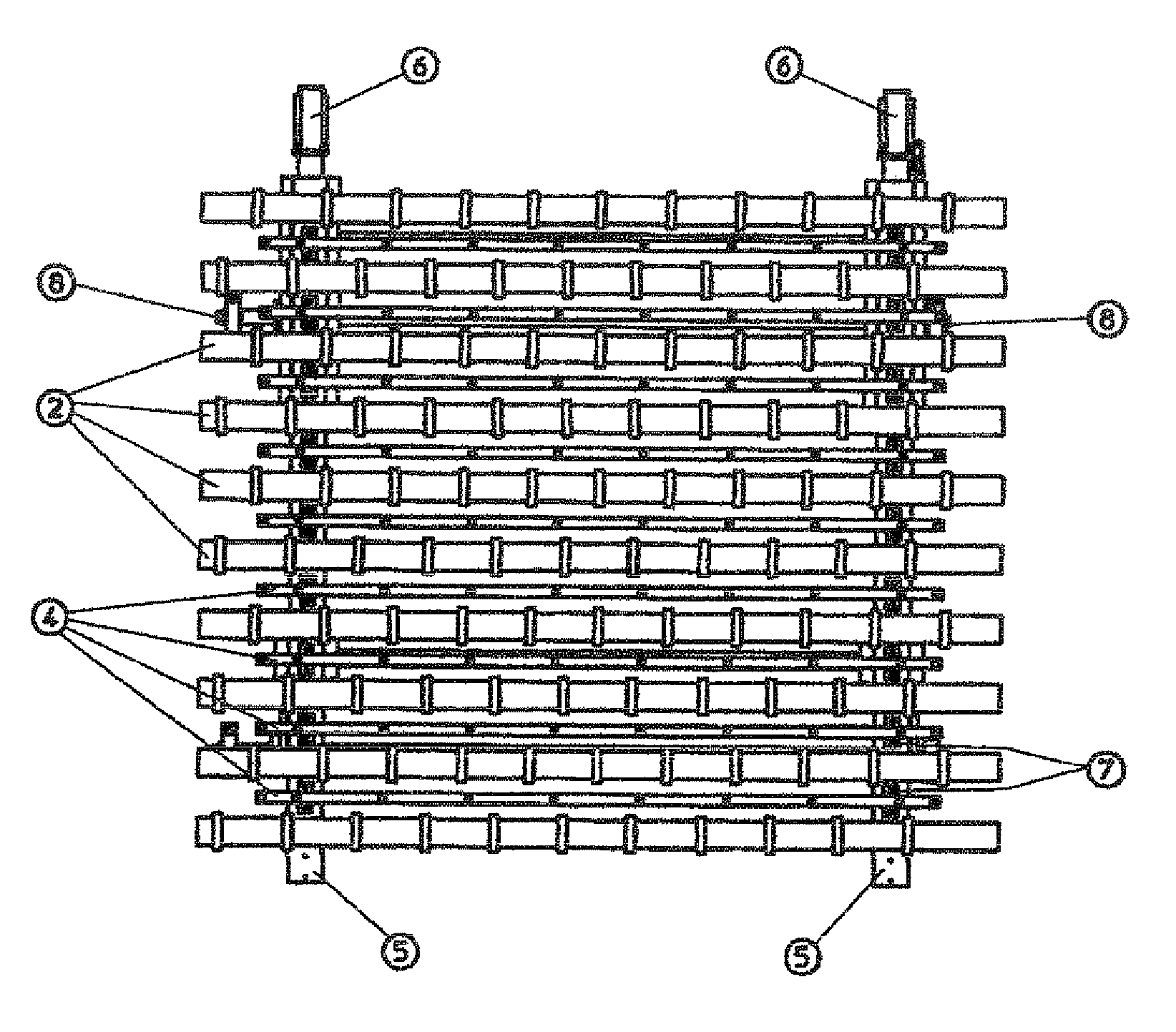Method and apparatus for the contamination-free treatment of shock-sensitive glass plates in ultra clean rooms
a technology of shock-sensitive glass and ultra-clean room, which is applied in the direction of lighting and heating apparatus, charge manipulation, furniture, etc., can solve the problems of unimportant conditions in which these movement sequences take place, interruption of lines, and failure of pixel, so as to achieve reliable and inexpensive production
- Summary
- Abstract
- Description
- Claims
- Application Information
AI Technical Summary
Benefits of technology
Problems solved by technology
Method used
Image
Examples
Embodiment Construction
[0042]For ultra-clean rooms, as are also used in microelectronics, there are a plurality of hierarchical areas with a corresponding clean room class. Thus, the ultra-clean room (class 10 and better), in which substrates are being processed, is surrounded by a separate area with the systems required for coating and structuring. Pumps required for vacuum technology are usually located on an underlying story.
[0043]Access is usually gained to the ultra-clean room through a sequence of different clean room areas with a decreasing clean room class. A change of clothes is generally required between these areas. In order to minimize soiling by items which come into contact with the floor (e.g. soles of a shoe), special sticky foot mats are located at each of the access points. Access to the ultra-clean room itself is gained additionally through air locks for people and materials in which, in turn, strong air flows and filter systems whirl up and extract particles which are present, such tha...
PUM
 Login to View More
Login to View More Abstract
Description
Claims
Application Information
 Login to View More
Login to View More - R&D
- Intellectual Property
- Life Sciences
- Materials
- Tech Scout
- Unparalleled Data Quality
- Higher Quality Content
- 60% Fewer Hallucinations
Browse by: Latest US Patents, China's latest patents, Technical Efficacy Thesaurus, Application Domain, Technology Topic, Popular Technical Reports.
© 2025 PatSnap. All rights reserved.Legal|Privacy policy|Modern Slavery Act Transparency Statement|Sitemap|About US| Contact US: help@patsnap.com



